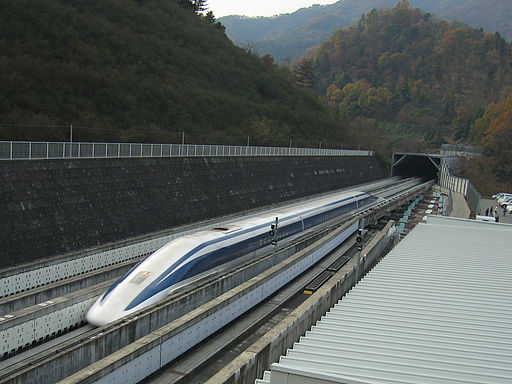CREDITS
Eiitan (ICSA)
Picture
By Yosemite (Own work) [GFDL (http://www.gnu.org/copyleft/fdl.html),
CC-BY-SA-3.0 (http://creativecommons.org/licenses/by-sa/3.0/)
or CC-BY-SA-2.5-2.0-1.0 (http://creativecommons.org/licenses/
by-sa/2.5-2.0-1.0)], via Wikimedia Commons

Maglev Train
Maglev, which is short for magnetic levitation, is a system of
transportation that uses magnetic levitation to suspend, guide and propel vehicles
with magnets instead of wheels, axles and bearings. With maglev, a vehicle is levitated a short distance
away from a guide way using magnets to create both lift and thrust. High-speed
maglev trains promise dramatic improvements for human travel.
Maglev trains move more smoothly and somehow more quietly than wheeled mass transit systems. They don't rely on friction so acceleration and deceleration is much faster and easier than wheels, and bad weather does not affect them like driving on a wet road can cause an accient. The power needed for levitation is typically not a big deal to get. Most of the power is used to overcome air resistance, as with any other high-speed form of transport. Although conventional wheeled transportation can go very fast, maglev allows routine use of higher top speeds than conventional rail, and this type holds the speed record for rail transportation. Vacuum tube train systems couold make it possible for maglev trains to go even faster than can be imagined, but no such tracks have ever been built.